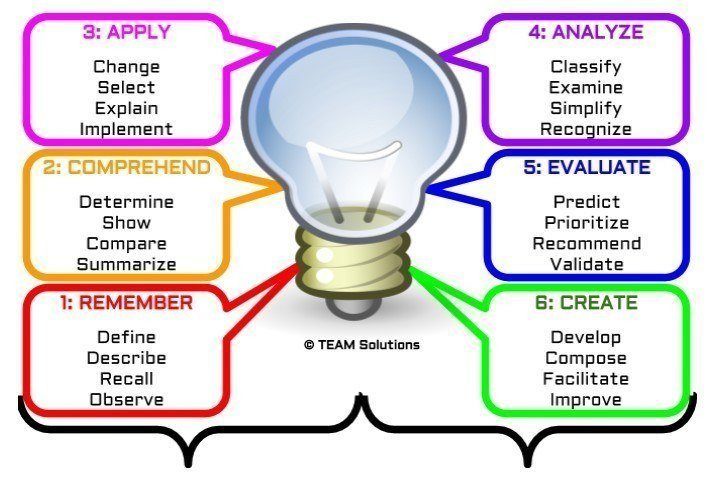Free Training Taxonomy Cheat Sheet
Use Learning Taxonomies to Improve Your Training Outcomes. Free download for quick reference to the verbs and classifications used to gain instructional mastery.
- As students we know that not all of the training content we receive is of equal quality.
- As instructors, it's our job to deliver quality content that meets - or exceeds - our student's expectations.
One way to measure that quality is to classify each training outcome with actions that range from broad and theoretical to specific and applicable.
These classifications are called taxonomies.
In the 1950s Benjamin Bloom and some other big-thinking educational psychologists developed a list of six them that have largely persisted through the years.
Not surprisingly, they're referred to as "Bloom's Taxonomy."
For example, using these taxonomies to support the goal of 'achieving 100% hand washing compliance before dinner,' might be:
- "Remember to wash your hands before dinner" using the label "remember," which introduces what we want the student to do.
- "Understand why hand washing is important"
- "Apply hand washing techniques to daily meal preparedness"
- "Analyze the challenges and opportunities that promote hand washing habits"
- "Evaluate the progress of a hand washing regimen"
- "Create a healthy habit of hand washing before dinner"
By progressing through each step, the last step "create" becomes an inevitable and successful validation of that progress, i.e. quality training.
However, if we start a new student at the creation step without addressing the other taxonomies, they will likely struggle, i.e. poor training.
Need to develop a training course? Try to use these taxonomies when identifying outcomes.
Even if all you remember is to add a reasonable verb at the beginning of each training objective, over time, addressing the different levels will become more natural.

For a free cheat sheet on these six classifications, enter your name and best email below. I'll send it right over.
Free Training Taxonomy Cheat Sheet
Use Learning Taxonomies to Improve Your Training Outcomes. Free download for quick reference to the verbs and classifications used to gain instructional mastery.
When assembling a lesson plan, also be mindful that, generally speaking, numbers 1-3 (Remember, Understand & Apply) relate to the learner's knowledge while 4-6 (Analyze, Evaluate & Create) relate to the learner's skill.
Remember, when joined together, knowledge + skill = mastery.
Happy training.
